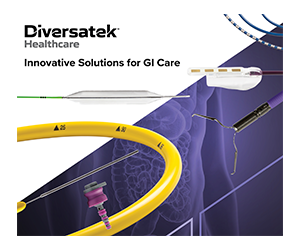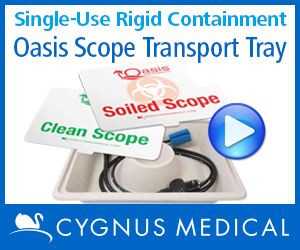LEXINGTON, Massachusetts—FUJIFILM Healthcare Americas Corporation, a provider of endoscopic imaging and endosurgical products, has been granted FDA 510(k) clearance for SCALE EYE, a new endoscopic imaging technology.
The SCALE EYE system consists of a laser-equipped colonoscope (model EC-760S-A/L) and endoscopy support software (EW10-VM01). The system displays a linear or circular virtual measurement—or scale—over the area of interest on the endoscopy monitor. With the push of a button, SCALE EYE aids endoscopists in estimating the size of colorectal lesions in vivo without relying on visual estimations, consumable tools, or the need for additional surgical instruments.
Traditionally, endoscopists estimate the size of neoplasms by comparing them against the size of the forceps being used to examine them, which creates risk for subjectivity. Compared to the biopsy forceps method, SCALE EYE enables more accurate, one-objective measurement of colon polyp size, a critical factor in making decisions for clinical management of neoplasms, specifically colonic polyps, as size can be an indicator of malignancy. Polyp size measurements are important for risk stratification, choice of polypectomy technique, and follow-up interval decisions.
“During colonoscopy, it is important to correctly measure the size of the polyps because it can directly impact the patient’s care pathway,” said Tai Fujita, vice president of the endoscopy division at FUJIFILM Healthcare Americas Corporation. “Early clinical results of SCALE EYE are impressive, and we’re proud that Fujifilm’s new, innovative in vivo scaling capability is demonstrating success in improving both the speed and accuracy of polyp measurement.”
Several studies have demonstrated the advantages of virtual-scale endoscopes compared to current methods in use.
“When it comes to polyps, accurate size assessment is essential to our decision-making process,” said Dr. Seth Gross, clinical chief of the Department of Gastroenterology and Hepatology at NYU Langone Health. “Polyp size is a factor in determining a patient’s recommended follow-up interval and may impact the decision on how best to achieve a safe and complete resection. We’re encouraged by early data and are excited to be the first U.S. site to evaluate SCALE EYE.”













